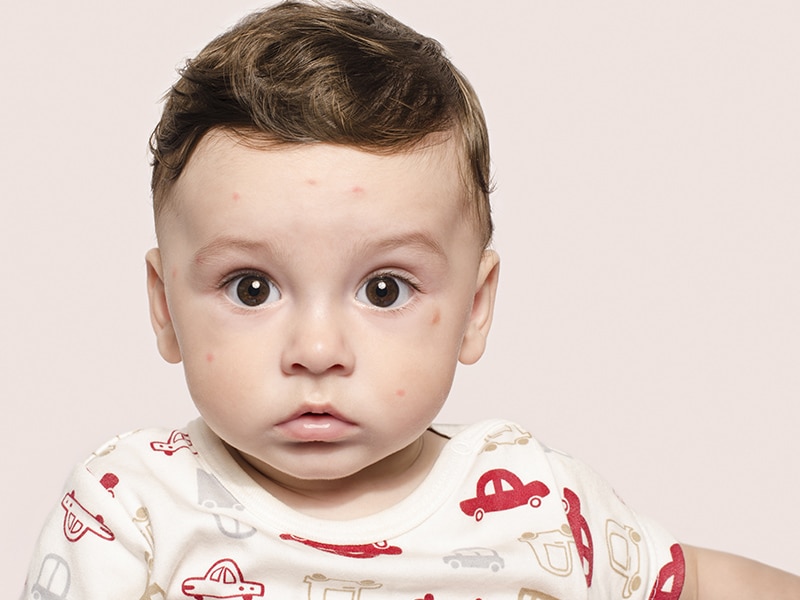Acne is a nightmare not only for teenagers. Many mature people struggle with this condition. How to help yourself to have not only pimples under control, but also their cause? You will find the answer in this text.
The cause of acne is complex and multifactorial. Hormonal disorders causing excessive sebaceous gland function, abnormal peri-particular keratosis and inflammation caused by Propionibacterium acnes are of crucial importance.
Is there such a thing as an “acne gene”?
Observations of twins confirm the hereditary background of the disease: environmental factors are responsible for the intensity of skin lesions only in 19%, and in as much as 81% – genetic factors. Genes control is mainly sebum secretion, and environmental aspects modify mainly the development of clinical symptoms.
Is there such a thing as an “acne gene”? Due to the multidimensional nature of the disease, several genes (and mutations) may be involved in its development. Additionally, the influence of chromosome count disturbances must be taken into account – e.g. in boys and men with an additional Y chromosome, the incidence of acne is much more frequent.
The role of vitamins in skin diseases
What works in addition to antibiotics, steroids and hormone therapy for acne? The latest literature data show that the right choice of vitamins is effective in up to 90% of cases. Vitamins A, C and B6 (in diet, supplementation and cosmetics) significantly affect the condition of our skin.
However, in order to fully fulfill their beneficial functions, they must be properly absorbed and assimilated by the body. The analysis of BMCO1, SLC23A1 and NBPF3 genes allows us to learn more about the course of their transformation and absorption in our bodies.
Vitamin A
The BMCO1 gene may contain one or two mutations (changes in the DNA sequence of this gene) that impair its function. In people with such a genetic burden, the efficiency of beta-carotene to vitamin A conversion is significantly reduced and they are at risk of deficiency.
Possible consequences of disturbances in the metabolism and absorption of vitamin A:
Stimulation of photoageing of the skin at its exposure to the sun: intensified appearance of wrinkles, roughness of the skin, yellowing, spots and discoloration,
Reduced synthesis of collagen and its accelerated degradation, i.e. weakening of skin elasticity and earlier appearance of wrinkles,
Derioration of skin condition, its thickness and resistance to injuries, ability to heal wounds,
Increased susceptibility to acne and weaker response to the treatment of lesions.

Preventive actions:
Personalized diet to supplement deficiencies in the form of e.g. active form of vitamin A from rich food or supplements,
Providing vitamin A in cosmetics and daily care,
Isotrethionine (vitamin A form) in acne therapy (normalizes the work of sebaceous glands, reducing sebum secretion even to 30%, soothes inflammation in the course of acne, prevents the formation of acne scars, affects the renewal of skin cells and reduces the development of Propionibacterium acnes bacteria).
Vitamin C
Mutation of SLC23A1 gene, responsible for transport and absorption of vitamin C, leads to its abnormal distribution in the body.
Possible consequences of disturbances in the metabolism and absorption of vitamin C:
Reduced protection against free radicals, resulting in accelerated skin aging,
Disturbed synthesis of collagen and L-carnitine, essential for maintaining firmness and integrity of blood vessels and skin,
Accelerated skin ageing: the appearance of wrinkles and their faster deepening,
Aggravation of acne symptoms,
Increased caries activity, increased risk of gingivitis and periodontosis.
Preventive measures:
Diet enriched with products naturally containing vitamin C in large quantities,
Additional supplementation,
The use of cosmetics containing vitamin C or more stable derivatives thereof,
Sodium salt of ascorbyl phosphate (SAP; vitamin C derivative) for the treatment of acne.
Vitamin B6
An unfavourable change in the NBPF3 gene leads to a decrease in the level of vitamin B6 in the body.
Possible consequences of disturbances in the metabolism and absorption of vitamin B6:
deterioration of hair condition and hair loss,
increased susceptibility to seborrheic dermatitis,
increased risk of developing acne,
abnormal synthesis of collagen and elastin,
loss of skin cohesion and accelerated aging.
Preventive actions:
Dietary enrichment with products rich in vitamin B6 and improving its absorption,
use of shampoos containing vitamin B6,
moderate exposure to the sun,
an individualised dietary programme established in consultation with a professional (excessive supplementation of vitamin B6 may contribute to the aggravation of acne lesions).
Dynamic development of knowledge about genetic conditions and increasing the availability of this type of research enable us to consciously take care of health and beauty, as well as more effective treatment of skin diseases, such as acne.


